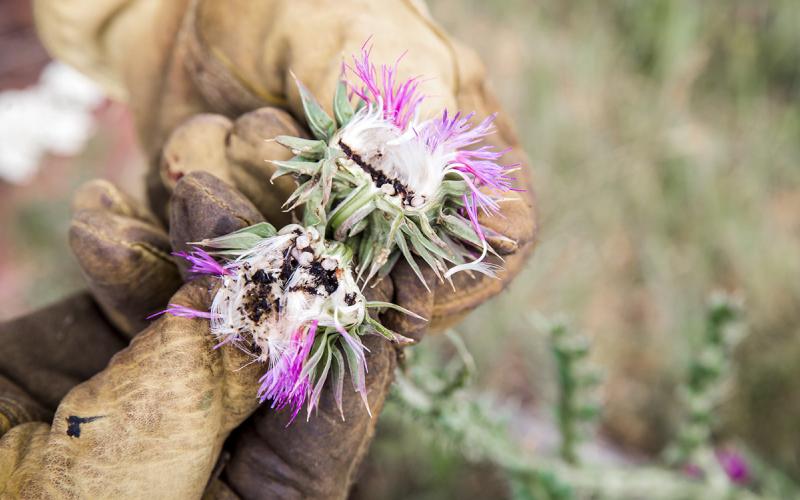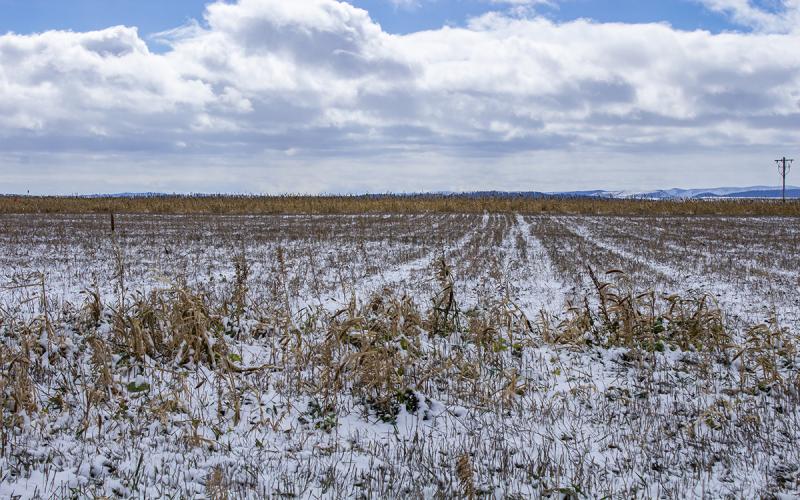
Written collaboratively by Eric Jones, Philip Rozeboom, Jill Alms, and David Vos.
As the 2024 harvest season comes to an end, now is the time to start planning your weed management strategy for next year. While purchasing herbicides, crop seed, and other inputs take priority after harvest, consider asking yourself the following questions to better prepare for managing weeds next season.
Questions to Consider
How was my weed management plan this year?
If weed management this year was poor, the plan should change for next season. If weed management this year was excellent, the plan should still change for next season. Over-reliance on the same weed management plan that provides excellent control will eventually select for weeds that can survive the tactics (for example, spraying only glyphosate in glyphosate-tolerant crops year after year). However, if weed management was poor, consider implementing tactics that were not included this year. A preemergence herbicide, a residual herbicide mixed with a postemergence herbicide, or implementing non-herbicide tactics are things that may have been left out of the plan this year but should be included in the 2025 season.
Where were the weedy fields?
There were many fields in 2024 that were drowned out due to rain. These areas are usually inhabited by weeds and, therefore, should be a focus for management in 2025. Fields that were infested with later-emerging weeds or did not receive timely herbicide applications should be recorded as places were management intensity should likely increase. Other historically weedy fields should also be regularly scouted to ensure tactics are being conducted timely.
What weed species were present?
The 2023 growing season was dry, therefore weeds that prefer drier conditions (for example, kochia) thrived and were plentiful at the beginning of the 2024 season. Since 2024 was a wet season, more weeds that prefer wet conditions (such as barnyardgrass and smartweed) likely produced a lot of seeds and will be present in the beginning of the 2025 season. Knowing what weed species were present in fields will help with purchasing the correct herbicide (pre- and postemergence). Weed management should be treated on a field-to-field basis, as herbicides can be effective on some weed species and not others. If a field was inhabited by kochia, purchasing 2,4-D and glyphosate to treat that field will probably result in unsatisfactory control, whereas using those herbicides to treat a field inhabited with yellow foxtail and velvetleaf would likely result in satisfactory control. Consult the latest South Dakota Pest Management Guides for a comprehensive list of herbicides labeled and species controlled.
Can non-herbicide weed management easily be implemented?
While herbicides are the most-effective weed management tools, implementing non-herbicide weed control tactics can provide additional control and reduce the selection pressure for herbicide-resistant weeds. Easily implemented tactics include tillage (prescription tillage or adopting no-till), row spacing (for example, drill-planted soybean or 20-inch row corn), fertilizer (makes crops more vigorous), mowing ditches/fence lines, and hand weeding small, isolated patches. Some of these tactics will have the most utility for site-specific management compared to implementing across the entire farm.
Should a different crop rotation be implemented in certain fields?
Crop rotation will allow for the use of different herbicides to control various weeds and reduce reliance on a single herbicide. Additionally, rotating to crops with a different lifecycle (for example, winter versus summer annual or perennial) can provide control by simply disrupting the lifecycle of weeds. Wheat and small grains are planted before many summer annual weeds and can be a physical barrier to germinating weed seeds. Weed management can also be implemented after wheat/small grain harvest to control weeds that are present, so seeds are not produced. Fields that have serious weed infestations can be rotated to a perennial crop, such as alfalfa, that can be more competitive. Summer annual weeds cannot survive repeated cuttings, and constant vegetation reduces the amount of seed germination.
Did any herbicide control failures occur that were not attributable to adverse weather conditions or misapplications?
A control failure may not always mean herbicide-resistant weeds, but caution should be exercised where the failure occurred. Try to use a different herbicide from the previous year, use different herbicides in the pre- and postemergence applications, and utilize approved herbicide tank mixtures. If control failures still occur, report the problem so appropriate measures can be taken to determine if the weed is resistant or not.
Prepare for the worst, hope for the best.
While there will never be a perfect weed management plan, utilizing many tactics will aid in increasing effectiveness. Utilizing various tactics will also increase the resiliency during adverse weather conditions. While the conditions for the 2025 growing season are still largely unknown, prepare for adverse conditions so weed management can be a relatively simple task.


